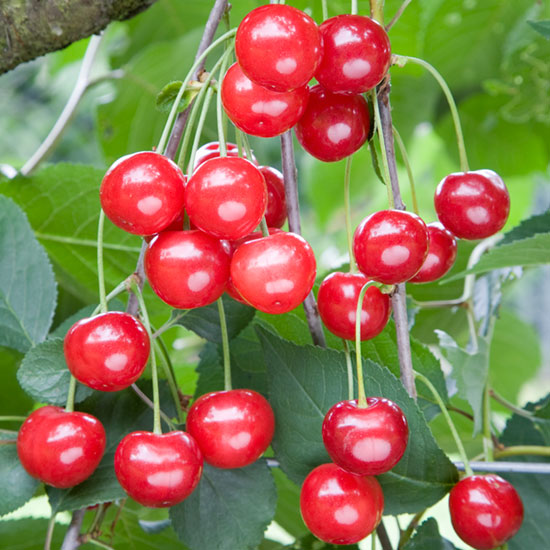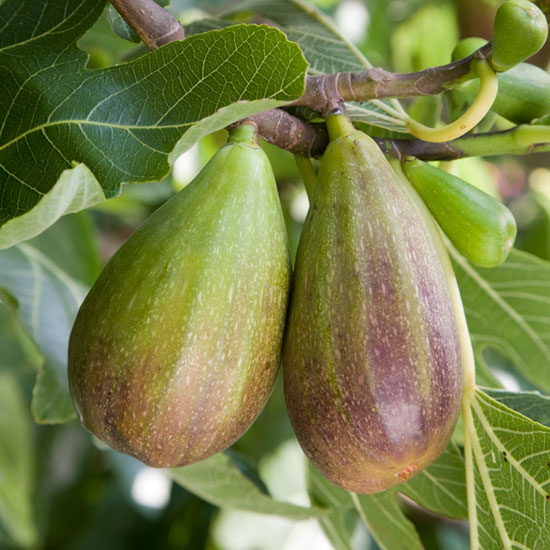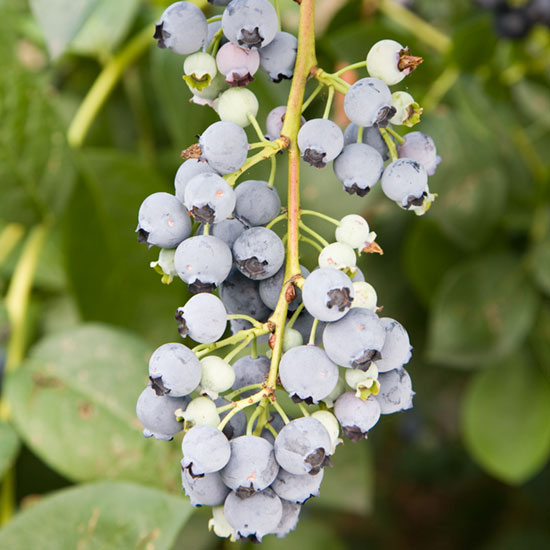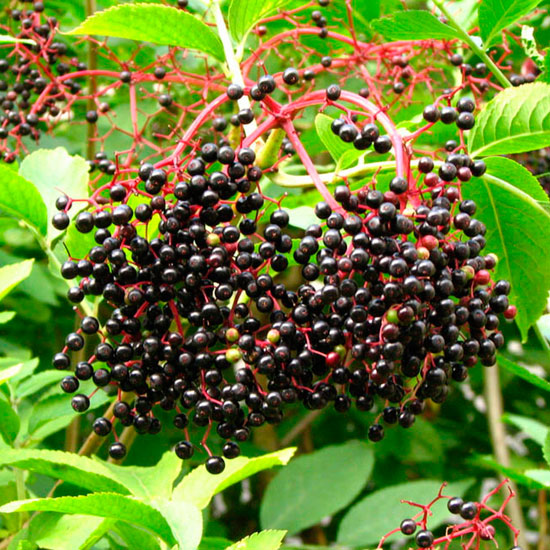Unfortunately many gardeners do not have what they perceive should be ideal growing conditions in their gardens and therefore quite often do not grow anything useful in what might seem to be the most challenging places. This is very unfortunate as almost anywhere in the garden can grow plants well except, perhaps, very dry and very dark places. And from my fruit growing perspective I can advise you that fruit can be grown almost anywhere in your garden other than the two places I have just noted.
So let’s start at perhaps what is considered the most challenging of areas and that is shade or partial shade. Quite surprisingly to some this is not as challenging as might be thought and there is a fairly extensive range of fruit plants and trees that can be grown in these conditions. An ideal fruit tree for shady fences and walls is the acid Morello cherry. This really seems to thrive in these conditions and I really despair when I see it given precious warm fence or wall space. A fan is the best way to grow this cherry but it can be grown as a stand-alone bush if required. The good thing about these cherries – apart from their cooking qualities – is that birds don’t particularly like them. They would rather eat the sweet cherries! The good old fashioned damsons will also thrive in shady conditions – both as fans and bush trees – as will gooseberries. Indeed, when I grew a large amount of gooseberry plants I always grew them in shady areas, leaving more sunny areas for my red and white currants. Growing gooseberries as single, double or triple cordons is probably the best approach though.
Moving on now to what many gardeners seem to think is the worst possible soil and that is London Clay. Well actually it’s not and it is absolutely ideal for growing apples, which is why they grow so well in this country. But having said that, even the thickest of clay soils can be converted to a very good, friable soil if it is worked on. The absolutely ideal way to turn a thick clay soil into a pleasurable easy to work soil is by double digging and that is exactly what I do. This not only helps incorporate bulky organic matter into the clay but it also stops a hard ‘pan’ form underneath the topsoil. Although double digging does involve a fair amount of elbow grease the results will be worth every moment spent. It is a simple process – line out an area to dig, strip off the topsoil and lay that to one side. Now dig over the next layer to a depth of one spade and incorporate as much bulky matter as you can find. Garden compost is ideal but well-rotted manure and the contents of old grow bags will work equally well. When the bottom layer has been dug over add back the topsoil and then leave the soil to settle for a few weeks before planting. What you mustn’t do in heavy clay soils is simply dig planting holes as these will act as sumps in wet weather and roots sitting in water will either rot and die or just dieback. Apart from apples you can grow other top fruits in clay soils such as pears, plums, quince and medlars, assuming that you have prepared the soil as I have suggested. Water trees well at planting time but thereafter be careful not to overwater.
Perhaps the opposite to heavy, water retaining clay soils are dry sites which inevitably have dry thin soils. Strangely enough these are dealt with in a similar way as what we aim to achieve is good water retention. This can be achieved by adding a good amount of bulky material as before preferably incorporating in both levels if double digging. Providing the dry site does get a good amount of light and sun most soft and top fruits can be grown but it will be very important to water on a regular basis. If this is not going to be achievable you will need to consider planting some of the more drought tolerant fruit such as figs – with the roots enclosed – blackberries and outdoor grapes. Apricots, peaches and nectarines will tolerate some drought but not over a prolonged period.
Chalky soils can create problems for gardeners particularly if the chalk is just below the surface. It is very easy to contemplate just stripping out the chalk but this is very difficult indeed so I do not advise it. You have two options therefore, one which will be more expensive although effective. The cheaper and more usual option is to dig out planting holes where you wish to plant your trees. By dig out I mean you may well have to pickaxe out! Dig out to a depth of 60cm (2ft) and backfill with topsoil which you have either obtained from another part of the garden or have imported. You may need to water your trees for the first year to get the roots growing well. The alternative method of growing on chalk is to import a load of topsoil into the garden and spread it to a depth of at least 45cm (18in) but this is a very expensive operation. All top fruits can be grown in this type of soil, although in the case of apples certain varieties such as Bountiful, Charles Ross, Fiesta, Howgate Wonder, Lord Derby, Lord Lambourne and Red Devil are reputed to do better than most. However, you will have to experiment and get as much topsoil into the planting hole or area as you can. I also suggest that you choose the apple rootstocks M26 or MM106 (but never M9 or M27) and the pear rootstock Quince A.
If you have a really acid soil you will be one of the lucky few who can grow blueberries directly in the ground. Yes, you can grow them in pots or in ericaceous compost filled holes in the garden but there is nothing better for these plants than growing directly in the soils that they thrive in. Cranberries and lingonberries will also thrive in these conditions. It is highly likely that acid soils will be fairly water retentive but if it is not, try and bulk it up with a few bags of pine needles as this will not affect the acidity.
In certain areas wind can be a problem and the real issue here is that of pollination. Most pollinating insects avoid windy sites as they are unable to fly in strong wind and therefore fruit trees that are not self-fertile will often be poorly pollinated. This can be overcome by the introduction of either living or artificial windbreaks or by growing self-fertile fruits where less visits by pollinating insects may be required. Damsons, plums and to a certain extent cherries will do reasonably well as will fruiting hedging plants such as bullaces, elderberries and sloes. Blackcurrants and blackberries will also do well but I would avoid red and white currants as their pollen can be quite sensitive.
And whilst not problem areas as such, consider how to cover fences, walls, sheds – along these you can grow fan trained cherries (a shady wall for Morello cherries remember), apricots, nectarines, peaches and plums or espalier trained apples and pears. You can also form your boundary with an edible fence as I outlined in an earlier blog.
So hopefully you will now realise that what you might think are problem areas in your garden are nothing but mild challenges!
Gerry Edwards
7th December 2014
Gerry is an experienced amateur fruit grower who is Chairman of the RHS Fruit Group, a member of the Royal Horticultural Society’s Fruit, Vegetable and Herb Committee and also their Fruit Trials Panel. Gerry judges fruit nationally for the Royal Horticultural Society and is also a qualified National Vegetable Society judge.





Thank you for the information on planting fruit trees on my chalk. Enlightening and helpful if at first rather disheartening 😟. However, not all gloom and I will see what the can do.
Jane Murphy
Thank you again. Last year I dug 100 bags of soil improver, 12 of Miraclegro, a bucket of chicken pellets and a box of F B & B around the borders. I was gratified this week to see a huge increase in worms, but obviously need to do more. It is very disheartening to be unable to find someone to dig my border -wielding a pick axe is beyond my elderly strength I’m afraid, so may have to abandon the idea 😟. Fingers crossed someone will turn up ….. ! Your suggestions always welcome.
Jane Murphy
Thanks for this ! Really interesting ! And possible a few really achievable solutions to my garden fruit problems in there ! Cheers james !